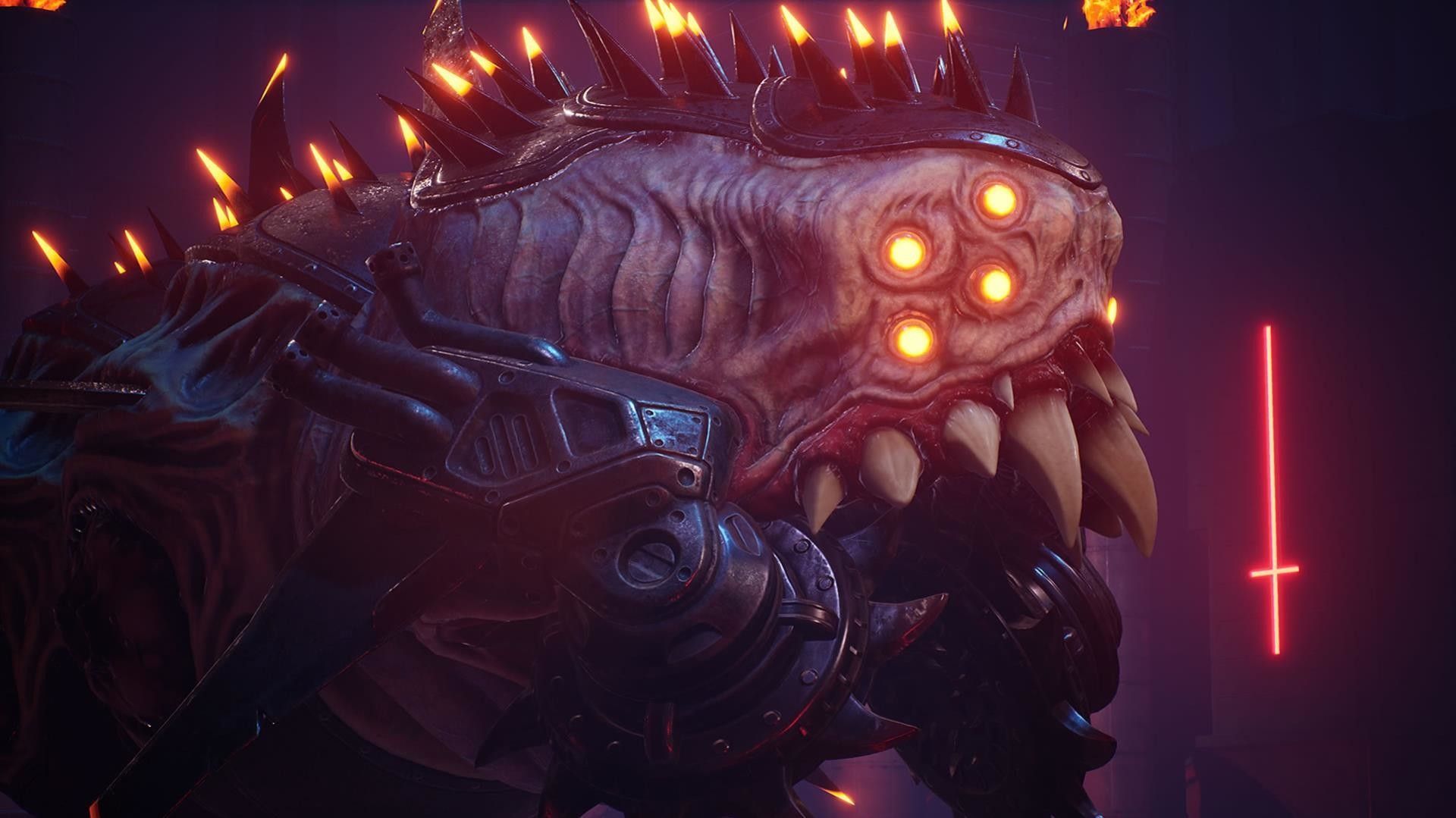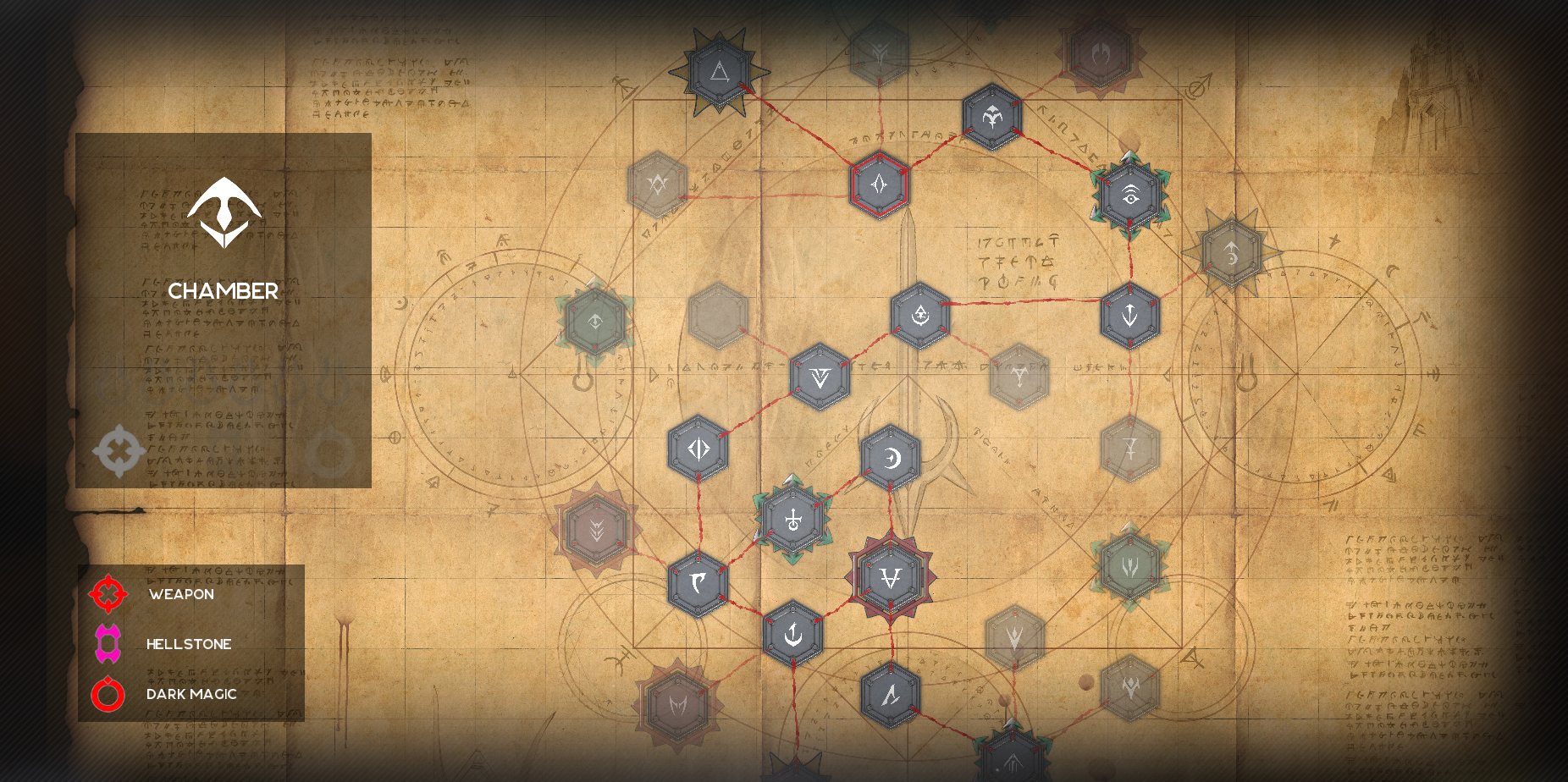Scathe Review
Fantastic action with questionable design decisions

When I finished my preview coverage of Scathe roughly three weeks ago, I was excited to get my hands on the full version of the bullet-hell FPS. The game is gorgeous with interesting enemy designs, varied level architectures, and fantastically challenging gameplay that really is a blast to play. Unfortunately, the team at Kwalee made some questionable design decisions that hurt the overall package, such that it feels like a slog to see everything the game has to offer.
Scathe wears its inspirations proudly, hearkening back to the golden age of first-person shooters such as Doom, Quake, and Hexen. Seeing as the game is set in Hell, the Doom clone comparisons are inevitable, but what you have here doesn't feel like an asset swap or a cheap imitation of those original games, but more of an updated homage to the early days of the genre. Though I only tested out the single-player option, the game offers up to four player co-op and online modes as well.
The story is minimal but does the job, sending you into Hell as the weapon of the Divine Creator, with the mission to destroy the hordes and return with the underworld lord's staff so that your boss can set the balance of good and evil.

All of the genre staples are here: lots of guns, demons of all types at every turn, large levels, and tons of gore when your bullets hit home. Scathe adds dark magic abilities that pleasantly vary the combat, which of course is the main attraction here.
Where this FPS stands out from the crowd is the bullet-hell style of combat, filling the player's screen with potentially dozens of enemies and hundreds of projectiles at once, which can lead to a very quick death. Fortunately, you have ten lives to get on with, and a generous continuation from each one, basically picking up right where your last iteration died. It's a good counterbalance to the difficulty of the combat and leaves you always wanting to have one more go. It is immensely satisfying to take out a horde of enemies, weaving back and forth while taking advantage of your dodge dash/attack, feeling like a proper death-dealer.
The moment-to-moment gameplay is blasting baddies, picking up health and the occasional 1-Up to replenish your stock of lives, while also scouring the levels for collectible runes that will open the way to exit the level. Go through each room, make your way to the mini-boss stage, and defeat them to earn a Hellstone. Once you've made your way through all six of those mini-bosses, the door to the big boss will open. Simple enough, eh?
Each one of the levels is a take on a few different biome themes, be that a temple-like structure, a natural theme with vines and trees and creepy pulsing orbs everywhere, or the typical industrial factory look with lava and catwalks and crumbling stone walls all around. The level designs are routinely great, and while some levels are comprised of too many confusing corridors, others are more open and natural feeling. One of my personal favorites sees you running around the inside of a circular tower, all metal catwalks with the entire middle open. You can see everything, but how to navigate the maze of stairs to get where you want to go is the challenge.

The game looks wonderful, with gorgeous graphics and lighting for all the enemies and the biomes you will fight through. It runs extremely well even with all the particles and bullets flying through the air at all times. The sound really sets the stage, as you can hear the enemies seething and snarling as soon as you load into the level. More than once it set my hair standing on end not knowing where the enemies would be and what was waiting to pop out at you as the waiting hordes unleashed their bloodthirsty screams.
The weapons are superbly designed, with small moving parts that catch the eye, runes carved into the metal, ammunition glowing and everything looking appropriately deadly. The first weapon you get is the Hell Hammer, your basic machine gun which thankfully has infinite ammo and always feels useful even as you progress to tougher baddies. The assortment here is elevated from the usual FPS arsenal, even when the form is the same. The shotgun has a secondary attack that shoots an area of effect mine for the demons to wander into. The electric gun's alternate attack chains electricity across multiple baddies, slowly eroding their health. There's even an incredibly powerful single-shot revolver that you can dual-wield as part of your dark magic arsenal, and though I found it cumbersome to use with its default button placement, the developer has included full button mapping capabilities as well as controller support to alleviate that issue. These are the only weapons and powers I've found, less than half of what is on offer here, but more on that later.
Where Doom and Doom Eternal have created a new wave of the "push forward" gameplay style, Scathe largely lets players mold the fight on their own terms by retreating and finding strategic corners for cover. The enemies will largely make their way toward you, but others will require you to close the distance in order to efficiently dispatch them (the hovering helicopter-like enemies come to mind). There's great variety in the demons, and the game offers an excellent bestiary from the main menu showing the designs and telling a bit about each one.
I can confidently say that I love the action in this game, even when I'm pulling my hair out after being melted for the millionth time. It's frenetic and unrelenting but never feels cheap in and of itself. There are no monster closets and each level has a finite number of demons, so the feeling of clearing the stage and walking among the torn corpses of your dispatched foes is wonderful.

Where things start to fall apart is in the way the overarching underworld is designed. Each level is a discreet room that is connected to one or more other rooms, as indicated by the thin red lines. Certain rooms have colored/shaped outlines indicating what is in them - green arrows is a room with a weapon, beige points are mini-bosses, and red points indicate a hub that connects to several other rooms and also act as your re-start point should you deplete all ten of your lives. None of this is told to you, it's left for you to surmise from the symbols on the left of the map under each room's symbol/biome identifier.
Those stylistic choices by themselves aren't really a problem, and it helps the game stand out from the competition. Where this discreet level design becomes a major issue is that there's no way to get back to other sections of the map without backtracking. This might work for a Metroidvania, but in an FPS like this where all the enemies you just fought through pop right back to life, fighting your way back through everything you just dispatched just to get to more fighting isn't all that fun.
Case in point, I had just defeated the mini-boss in the room near the top of the map screen shown above, after about 10 lives worth of trying. I got the Hellstone, but now I'm at the far end of that strand with no way out but to go back through the way I came in. Maybe it's just me, but that's the last thing I want to do at that moment, and it totally saps my desire to keep going. I love the gameplay, but I don't want to see the same level in reverse, I want to keep discovering new content, new enemies and new sights. And if I have exhausted a whole side of the map, I could be looking at fighting through ten or more rooms I've already conquered just to get back to one I haven't seen yet. In case I'm missing something obvious, I reached out to the developer to confirm that there isn't a fast travel system or other way than back through the hordes, but as of this writing I haven't heard back.
This design choice also comes into play with the discovery of weapons and powers. The game's various means of dealing death are spread around the maze, so if you end up going far down one side of the map, you may have to do it with only one or two weapons. I've played the game a combined 20 or so hours at this point, and I've only discovered three weapons and two dark magic abilities, leaving three weapons and five abilities I've never been able to use. In a game that's all about combat, that should never happen. Granted, once you find these weapons and abilities, you don't lose them unless you start a whole new game, but the same problem of getting to those weapons because of the discreet level design again raises its ugly head.

Speaking of mini-bosses, the two I've fought were both arranged in rooms where they were in the center and the outer ring of the room was relatively clear of obstacles. I defeated both by just strafing in a circle and firing at them when I had an open shot. The presence of regular enemies and the bullet-hell nature of the screen constantly being filled with death is the only complicating factor in the fight. So the fights weren't simple, but they didn't require even as much strategy as the regular levels leading to them did, because of the much less varied and challenging architecture where the fight took place.
The difficulty of these encounters also hinges on the weapons you've been able to find to that point. The second mini-boss I fought found me with just the original gun and the shotgun, and I was quickly out of ammo for the shotgun, leaving me to ping away endlessly with the basic machine gun. Not un-fun, but not the way you want your showcase battles to play out.
In the end, Scathe is a well-made game with truly enjoyable combat that I wanted to experience more and more. The game definitely gets in its own way due to the discreet nature of the level design, making it tough to want to keep going when you're fighting through the same levels just to see something new. If that doesn't bother you, however, you're in for a good time, and I wish you luck in the depths of the underworld.
